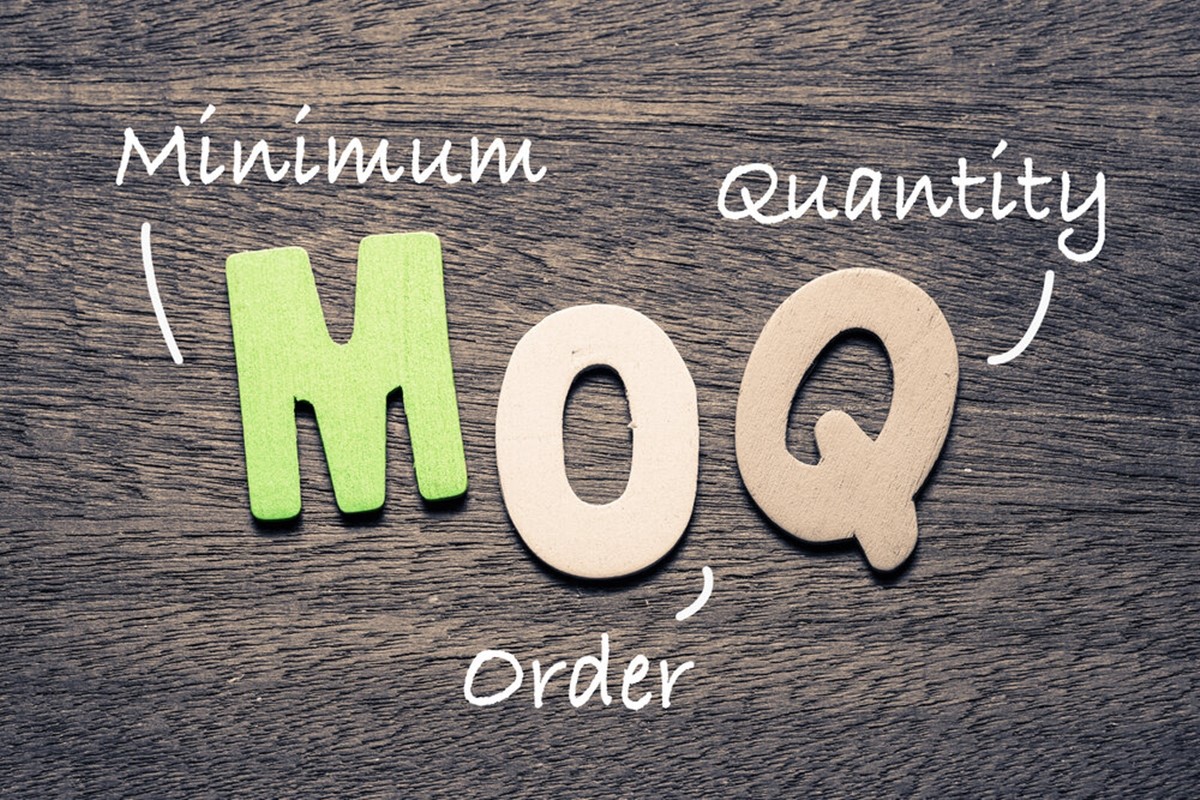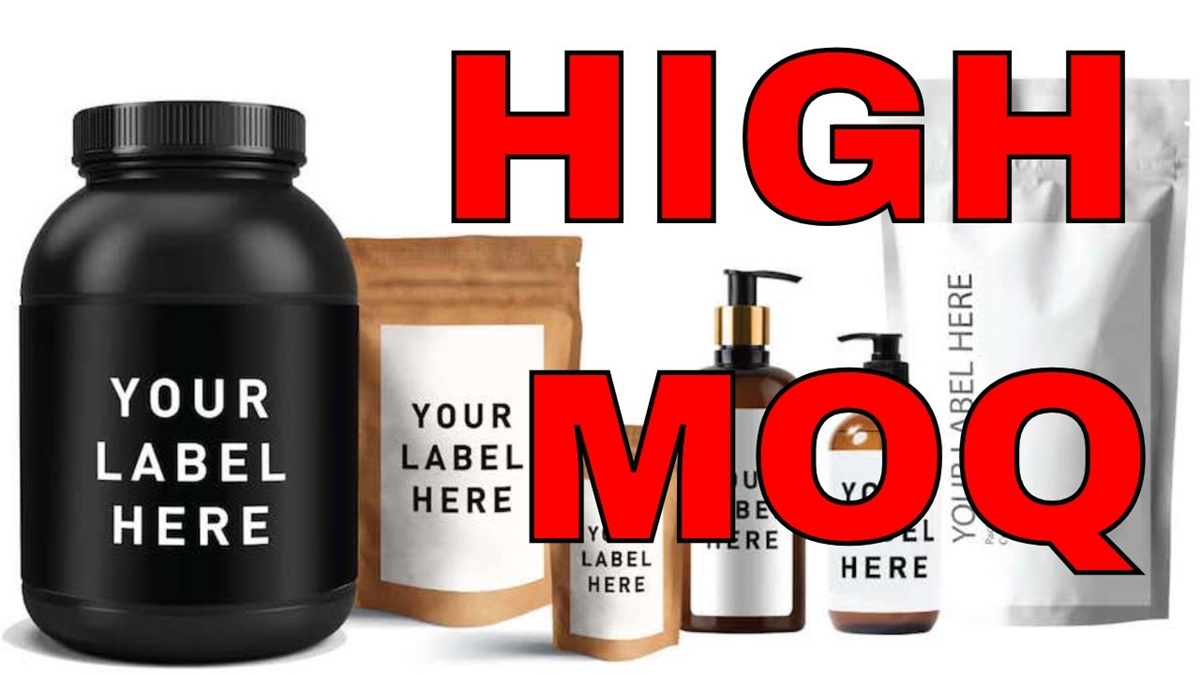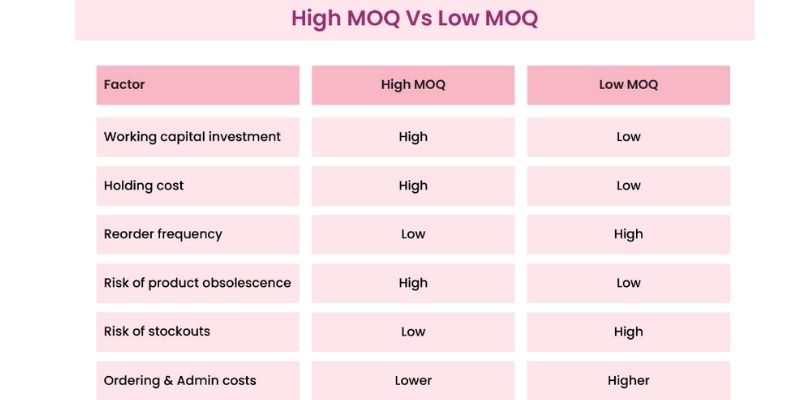Understanding Minimum Order Quantities (MOQ): A Comprehensive Guide
For many people, the term MOQ may sound strange. MOQ is a commonly used term in the trading, e-commerce business, especially in the field of B2B. For the shop owner, you must know about MOQ because it plays an important role in your business. So in this article, we will explain what is MOQ and 10 questions about MOQs that people always asking. All relevant information will be analyzed in detail. Going ahead to learn more.
Key takeaways
- MOQs are set by suppliers to cover production and delivery costs, ensure demand, and prevent small businesses from undercutting prices.
- MOQs can create challenges for small businesses, but understanding and strategically navigating MOQs can lead to significant benefits, including cost savings and improved supplier relationships.
- MOQs affect various aspects of business operations, from procurement and inventory management to profitability and customer satisfaction.
What is MOQ?

MOQ stands for Minimum Order Quantity, which refers to the smallest number of units a supplier is willing to produce and deliver simultaneously. MOQs can also be defined in terms of currency, meaning that the consumer must spend a certain threshold amount on products to meet the MOQ.
The purpose of Minimum Order Quantities (MOQ) is to ensure that manufacturers only accept profitable orders. MOQs are usually set to cover the overall production costs of manufacturers, which is necessary to make a healthy profit with each production start. When selecting their MOQ, suppliers must consider how much it costs to produce one unit. Suppliers who are forced to build fewer units than their MOQ could incur a loss.
In various industries, MOQs serve the same purpose of ensuring profitability for manufacturers and suppliers. However, the specific details of MOQs, such as the number of units or the threshold amount in currency, may vary depending on the industry and the nature of the products being produced.
Related Posts
The Mechanics of MOQ

Minimum Order Quantities (MOQ) are determined by suppliers’ economic challenges when processing orders. These challenges arise from various costs, such as materials, machinery, shipment, and administrative tasks like accounting and invoicing.
1. Simple MOQ
A Simple MOQ is defined by a single restriction on order, either in terms of a dollar amount or a specified number of units, often referred to as “eaches.” Many non-retail businesses work with at least this type of MOQ.
For instance, a book printing company may stipulate a minimum order. Setting up the machinery and printing just a few books isn’t cost-effective. Thus, they establish a minimum number of books per order to ensure profitability.
2. Complex MOQ
In contrast, Complex MOQs are characterized by multiple criteria that must be fulfilled when placing an order. Consider a clothing manufacturer: orders aren’t limited to a minimum number of garments. Additional conditions may include:
The Mechanics of MOQ

Minimum Order Quantities (MOQ) are determined by suppliers’ economic challenges when processing orders. These challenges arise from various costs, such as materials, machinery, shipment, and administrative tasks like accounting and invoicing.
1. Simple MOQ
A Simple MOQ is defined by a single restriction on order, either in terms of a dollar amount or a specified number of units, often referred to as “eaches.” Many non-retail businesses work with at least this type of MOQ.
For instance, a book printing company may stipulate a minimum order. Setting up the machinery and printing just a few books isn’t cost-effective. Thus, they establish a minimum number of books per order to ensure profitability.
2. Complex MOQ
In contrast, Complex MOQs are characterized by multiple criteria that must be fulfilled when placing an order. Consider a clothing manufacturer: orders aren’t limited to a minimum number of garments. Additional conditions may include:
- A minimum amount of fabric per color and type.
- A specified number of garments.
- A set dollar amount.
All these criteria must be satisfied for an order to be placed.
Setting up a complex MOQ system is intricate, necessitating detailed knowledge of every element’s cost, plus an understanding of the associated labor and administrative expenses for the order.
Why Do Suppliers Set a Minimum Order Quantity?

Suppliers set up a minimum order quantity as:
- Every supplier grapples with various costs and must achieve a specific profit margin on every order. This is due to the inherent expenses they have to bear, such as transportation, storage, handling, and administrative tasks.
- While these overheads might only constitute a minor fraction of the total order value, the reality is that the smaller the order size, the more significant the dent in the profit margin due to these costs. Here are a few samples illustrative scenarios of whether setting up large/ small or no MOQ:
| Parameters | Scenario 1 – Large MOQ | Scenario 2 – Small MOQ | Scenario 3 – No MOQ |
|---|---|---|---|
| Batch size (units) | 10,000 | 10,000 | 10,000 |
| MOQ for customers | 1,000 | 10 | 1 |
| Units sold per pallet | 10 | 1000 | 10,000 |
| Selling price (per unit) | £0.10 | £0.10 | £0.10 |
| Sales Revenue | £1000.00 | £1000.00 | £1000.00 |
| Cost to process & repackage (per box) | £0.20 | £0.20 | £0.20 |
| Processing Costs | £2.00 | £200.00 | £200.00 |
| Cost of goods sold | £802.00 | £1000.00 | £2800.00 |
| Gross Profit | £198.00 | £0.00 | -£1800.00 |
In the first scenario, the supplier achieves a considerable profit. But the profit evaporates entirely when we look at the second scenario, with much smaller customer order sizes. Even more concerning, in the third scenario, the supplier incurs a loss with every single-unit order.
This basic illustration underscores a crucial point: From a supplier’s vantage point, transacting in minuscule quantities is financially unsound. That’s precisely why suppliers establish Minimum Order Quantities (MOQ) – to safeguard their profitability.
What is the impact of minimum order quantity on inventory?
Minimum order quantities (MOQ) significantly influence inventory management for both sellers and buyers.
Sellers with a high MOQ must manufacture and potentially store vast amounts, affecting their inventory strategies. Conversely, buyers must assess whether they require at least the MOQ of a given product.
They might have to explore alternative suppliers with lower MOQs or contemplate different inventory storage solutions if not. Factors such as storage capacity and potential bulk-order savings become critical considerations for buyers.
High MOQ

High supplier MOQs necessitate large inventory orders, which could mean extended lead times. Such a sizable stock occupies a considerable portion of your warehouse space and ties up a significant amount of your working capital. Additionally, the prolonged retention of this stock might render it outdated.
Yet, there are benefits to high MOQs. You’ll experience reduced administrative costs since orders are made less frequently. Moreover, purchasing bulk often results in cost savings, minimizing the risk of stock depletion.
Low MOQ
Opting for a supplier with a low MOQ usually results in a limited product supply. Frequent inventory restocking might be necessary if customer demand varies, potentially escalating administrative and shipping expenses.
One of the pitfalls of low MOQs is the resultant smaller inventory, increasing the risk of running out of stock. If there’s an unexpected uptick in demand, you might find yourself ill-prepared, potentially missing out on sales and revenue.
Conversely, a lower MOQ reduces the upfront investment in working capital. Moreover, it diminishes the likelihood of your inventory becoming outdated over time.
Below is a table highlighting the contrast between high and low Minimum Order Quantity:

What are the benefits of MOQ?

Minimum order quantities (MOQ) offer considerable advantages for suppliers and buyers. When effectively managed, MOQs serve as a valuable inventory control tool. They help buyers maintain cost-efficiency while ensuring suppliers sustain healthy profit margins.
Benefits for supplier
- Stabilized Cash Flow: Properly setting product prices and order sizes via MOQs can lead to a more consistent and predictable supplier cash flow.
- Optimized Inventory Expenses: MOQs can help regulate inventory expenses. Rather than producing large orders and seeking numerous small buyers, some orders get delivered only when a buyer commits to a profitable purchase quantity. This approach lessens the need for extensive warehousing and curtails inventory-related costs.
- Enhanced Profit Margins: Utilizing MOQs strategically allows suppliers to preserve and sometimes even amplify their profit margins. This ensures products are manufactured when they promise meaningful returns.
Benefits for buyers
- Bulk Purchase Savings: When buyers engage with suppliers imposing MOQs, they often secure the best price per item. The cost savings from bulk acquisitions can amplify buyer profits, even if it means managing elevated storage expenses or offering discounted rates to quicken inventory movement.
- Strengthened Supplier Relations: Establishing a healthy rapport with suppliers who provide essential raw materials and products is paramount. Aligning the buyer’s optimal inventory quantity (EOQ) with the supplier’s MOQ can be a fine art. If the MOQ surpasses the EOQ, buyers have the leverage to negotiate potential adjustments or alternative solutions with suppliers. One such solution could be sharing the order with other buyers.
Calculating the Minimum Order Quantity (MOQ): Step by Step

Determining the right MOQ is crucial for balancing inventory costs with demand expectations. Here’s a structured approach to help you establish an effective MOQ for your business.
Step 1: Identify Fixed Costs
Before determining your MOQ, you need to understand your fixed costs. These constant costs stay the same regardless of how many units you produce or order, such as rent, salaries, and insurance.
Step 2: Identify Variable Costs
This involves understanding your holding costs, which vary based on the number of units held in inventory. Factors contributing to having prices include storage fees, insurance, taxes, and the potential for product obsolescence. Knowing how these costs fluctuate with inventory size and storage types is essential.
Step 3: Assess Demand
Evaluating demand is crucial to ensure you don’t overstock or understock. Consider product type, competition, seasonality, and more to forecast the market. Regularly reviewing sales forecasts helps adjust production quantities. Additionally, close communication with suppliers and maintaining a safe stock can help manage demand, especially during unpredictable times.
Step 4: Review Order History
Examining previous order volumes and frequencies can offer insights into future demands. For instance, if retail partners historically order 1000 units on average, it provides a benchmark for future MOQ considerations.
Step 5: Calculate Inventory Costs
This involves summing up both your fixed and variable costs. Given the expenses related to producing, purchasing, and storing inventory, determine the total investment required for different inventory levels.
Step 6: Determine the Break-Even Point
The break-even point is when revenues match costs, resulting in neither profit nor loss. This calculation considers both fixed and variable costs. For suppliers, the break-even point might be determined by unit production costs, while merchants might consider the cost to purchase a set quantity of inventory from suppliers.
Step 7: Establish the MOQ
Now, consolidate the gathered information to decide on your MOQ. Using factors like expected demand, break-even points, and desired profit margins, you can determine an MOQ that ensures profitability. It’s also worth considering offering volume discounts for larger orders, ensuring that profit margins remain satisfactory while costs decrease.
By following these steps meticulously and adjusting based on market conditions and business needs, suppliers and merchants can find the right MOQ to maximize profits and minimize costs.
FAQs:
Conclusion
This article has a deep definition of MOQs and answers the 10 most frequently asked questions about MOQs. I hope you find something useful from this Mageplaza post. I wish you could negotiate the best MOQs with your supplier and enjoy the profits.
You Might Also Like:
New Posts






